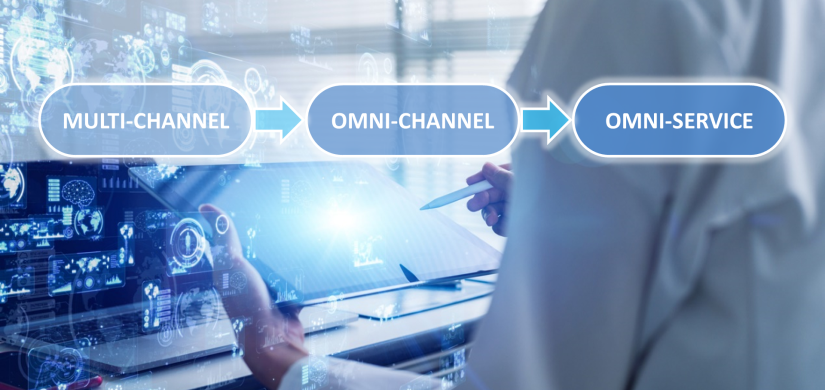What Does Omni-Service Mean for Healthcare Providers?

The term "omnichannel" is not new. You hear it when customer and patient care software providers describe how they enable the use of multiple channels for customer interactions. Specifically, and unlike the older term "multichannel", when supporting the meshing of various communication platforms together so an interaction can jump between channels.
This, however, is all very technical. Yes, the technology exists, and it supports chat and telephony and video and so on. But it's how you use it that matters.
The Omni-Service Strategy
Omni-Service takes the concept one step further. If Multichannel was a technology, and Omnichannel was a solution, then Omni-Service is a complete strategy. It's a strategy that looks at a whole set of customer-centric solutions for connecting the customer journey, customer experience, and customer satisfaction. Most importantly, it focuses on the people, not the technology.
When implementing omni-service, we are considering two key factors: the human interaction, and the completion of the service.
- Human interaction – can take place anywhere, not necessarily over a technological platform. Face to face meetings are as important as, if not more than, digital interactions.
- Service completion – customer service is more than the sum of its interactions. Working on a customer's case happens also in the backoffice, or when the customer is not present. Connecting online and offline work is as important as connecting different channels.

Omni-Service in Healthcare
Omni-service is super relevant for healthcare providers. Patient satisfaction and successful resolution of patient cases can involve work across different channels, as well as going back and forth between conversing with the patient and back-office discussions, lab work, offline consultations, and more.
Patients must be given choice of engaging with their doctor and other relevant medical staff over either digital channels or in the clinic. Similarly, doctors might need patients to be available for conversation on different channels.
Staff may also need to avail themselves on various channels internally for colleagues to reach out and discuss cases. The entire communication map, or patient journey, therefore takes on more dimensions than just an "omnichannel" selection of how one wishes to call their doctor.
Omni-Service Solutions
Q-nomy has pioneered the Omni-Service strategy, and we're also providing groundbreaking applications to support organizations wishing to implement this strategy properly.
- Our Omnichannel solutions naturally support patient communications, and we have everything covered: face to face interactions, video, phone, chat, messaging and so on.
- Our Workflow solutions are patient-centric and engineered to manage service processes as they journey between front and back offices.


